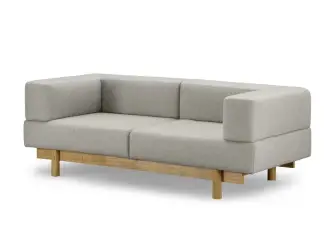70% of homeowners prefer Japandi furniture for its minimalistic and functional design. If you are one of them your journey to transforming your living spaces into a serene Japandi haven starts here. Japandi, a blend of Japanese minimalism and Scandinavian functionality, creates a perfect balance between simplicity, functionality and aesthetics. When it comes to choosing Japandi furniture, there are a few key guidelines to keep in mind.
Finding furniture that captures the essence of Japandi isn’t about picking the first sleek, minimalist piece you see. Instead, it’s about a thoughtful selection, focusing on the balance of form and function while maintaining a warm, natural color palette.
As we delve into the details, you’ll discover the fundamental principles of choosing Japandi furniture and how they can support the overall cohesion of your home’s décor. From texture and tone considerations to material selection – a world of understated elegance awaits you. Stick with us to learn how to pick Japandified furniture that marries beauty with utility seamlessly.
Understanding the Japandi Aesthetic: A Quick Overview
So, you’ve delved into the heart of the Japandi aesthetic – a fusion of the minimalist charm of Japanese and Scandinavian designs. The emphasis on clean, sleek lines and a love for natural material creates a sense of tranquility and understated elegance in any living space. As an emerging interior design trend, it’s capturing the hearts of enthusiasts for its perfect blend of functionality and aesthetics.
What makes Japandi style undeniably captivating is its adherence to simple and comfortable atmospheres, best characterized by sophisticated muted color palettes and open floor plans. It’s not about creating a showcase of perfection, but about celebrating the beauty hidden in simplicity through intentional design.


Organic textures gracefully merge with clean linear structures, typically expressed through wooden features infused into the design. The multifunctional spaces it promotes bring forth an element of practical usage without sacrificing style. If you’re after a home that exudes a rustic, earthy feel complemented by a soothing color scheme, the Japandi style has your name written all over it.
However, appreciating this simplicity-centered aesthetic and successfully implementing it in your choice of furniture are two different pursuits. After gaining a quick overview of the Japandi style, let’s delve deeper into how best to choose furniture that accentuates this unique blend of Japanese and Scandinavian design ethos.
The Minimalist Appeal: Defining Japandi Furniture
An essential characteristic of Japandi furniture is minimalism: this is a commitment to only incorporating elements that serve a purpose. This quality not only creates open, clutter-free spaces but also highlights the value of each individual piece. In Japandi design, less is indeed more, and every item in your room — from the couch to the coffee table — has its purpose and place.


One hallmark of the aesthetic is clean lines. Furniture in the Japandi style often show sleek, simple designs with no unnecessary frills or ornamentation. These straight lines and smooth forms project a sense of calm and order, resonating with the underlying principles of both Japanese and Scandinavian design.
Equally significant is the use of natural materials. In keeping with the principles of sustainability, peace, and simplicity that identify Japandi, wood is a key player. This design style appreciates, in particular, mid-tone woods that add warmth and a connection with nature. Don’t shy away from incorporating other raw materials too, like stone, bamboo, or ceramics— they add to the organic look and feel so characteristic of Japandi.

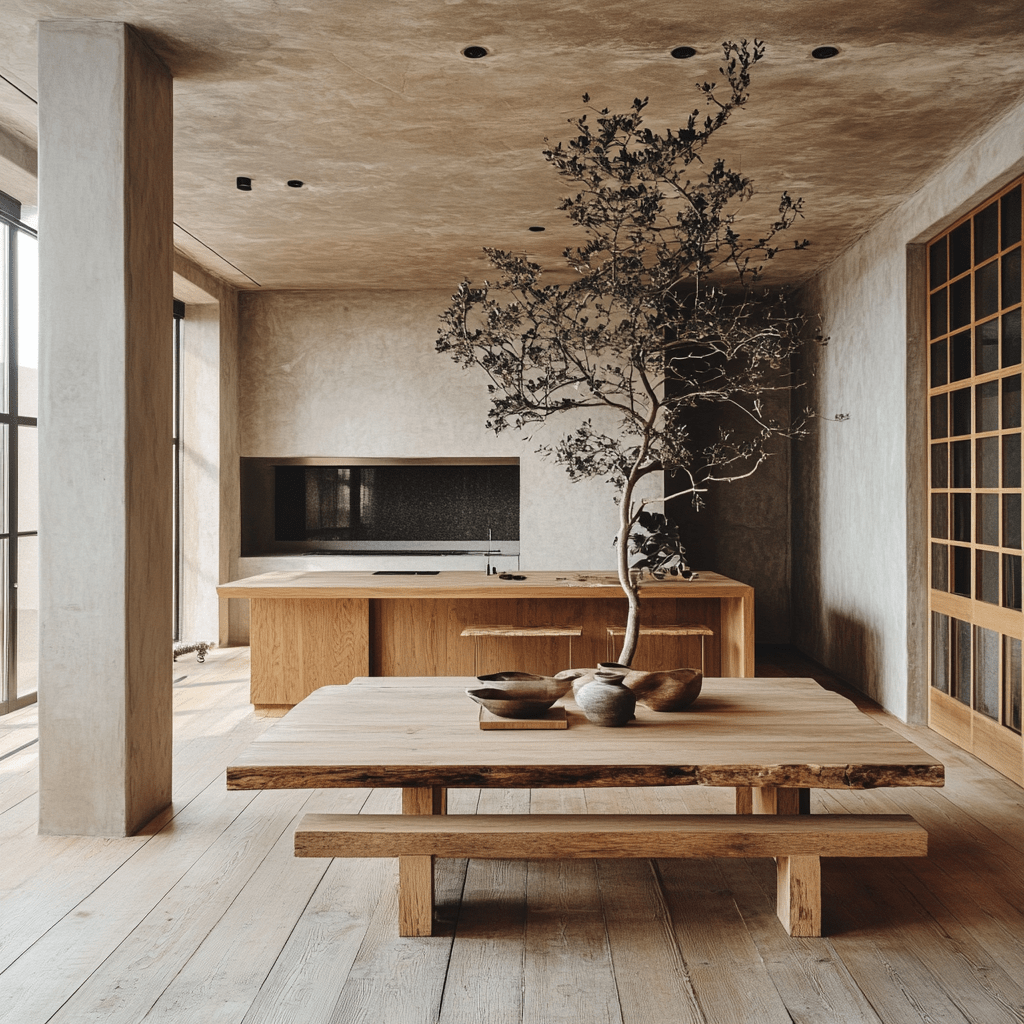
The Japandi style also favors muted color palettes, specifically layered, soothing neutrals. These tones are drawn from nature and create a serene ambience. Look for neutral off-whites, creams, and greys along with soft blues and greens to further accentuate the calming aura of your space.
Lastly, remember that multifunctionality is key in Japandi interior design. Seek out pieces that can serve multiple uses or can adapt to different situations – like extendable tables or modular seating. This focus ensures space is used efficiently, in line with minimalist philosophy.
Incorporating Japandi furniture is all about harmonizing simplicity with functionality, clean lines with comfort, and modernism with a connection to nature. Choose your pieces wisely and let the Japandi philosophy transform your space into a tranquil and timeless haven!

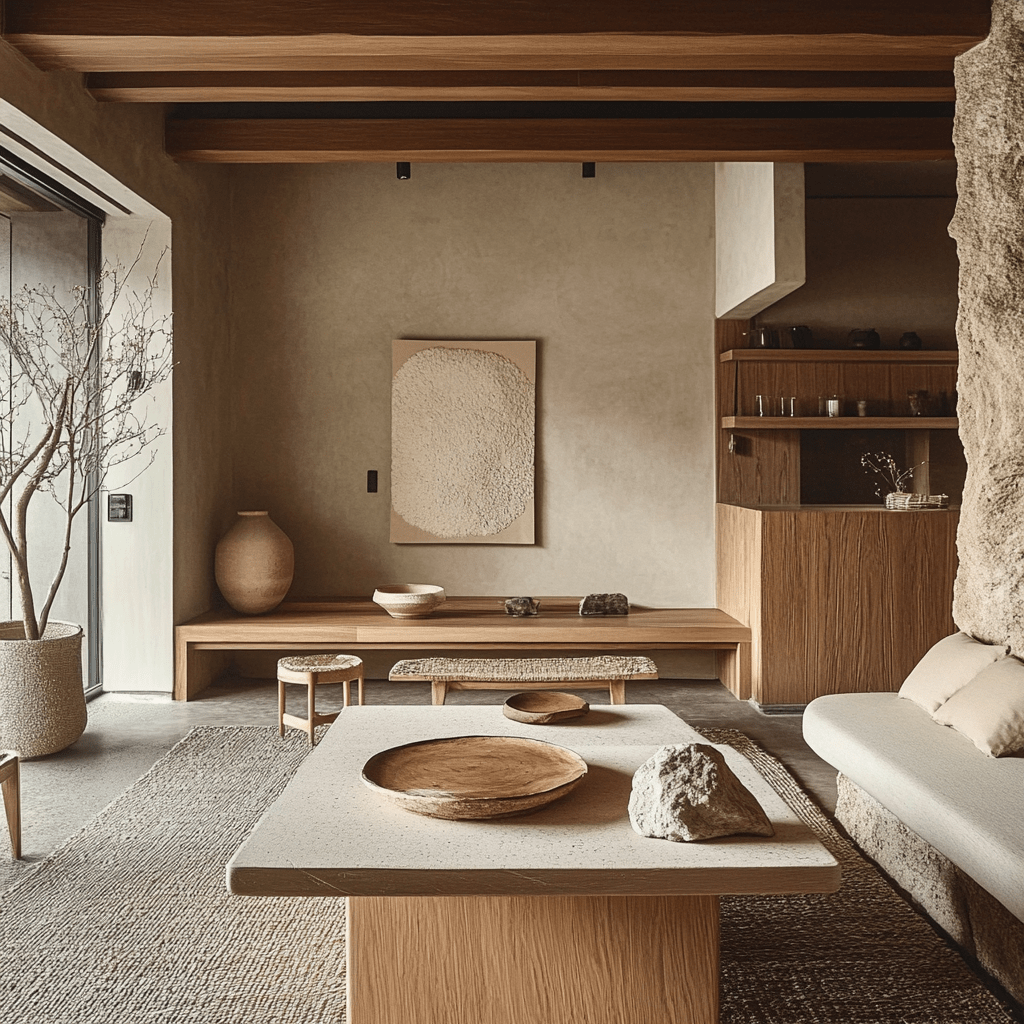
Here is a summary table of everything you need to know about Japandi Aestetics:
| Aspect | Description |
|---|---|
| Simplicity and functionality | Japandi furniture should be minimalist yet functional, serving multiple purposes if possible. |
| Clean lines and comfort | Designs should incorporate clean lines and balance them with comfort, often through organic textures. |
| Natural materials | Wood and other natural materials, particularly in neutral or mid-tone colors, are central to this aesthetic, symbolizing the connection to nature. |
| Color palette | Neutral hues such as whites, beige, taupe and off-whites dominate the Japandi style. Occasionally, muted tones and blacks are also used. |
| Open floor plans and multi-functional spaces | Furniture placement should enhance the openness of a space while providing versatility and utility. |
| Lighting | Bright spaces with significant natural light are preferred, paired with design pieces that support a softly lit, cozy environment. |
| Decluttering | Only essential, functional pieces are used, avoiding excess and promoting a calm, clutter-free environment. |
Japandi Furniture Must-Haves for Every Room
Have you ever wondered how to incorporate the Japandi aesthetic into your home’s furniture selection? Let’s walk through the process, room by room, highlighting furniture must-haves that embody this air of simplicity and elegance.
Living Room
Start your journey in your living room as it is usually the cornerstone of the home. Look for pieces with clean lines and designs inspired by both Japanese minimalism and Scandinavian functionality. A low-line sofa paired with a midtone wooden coffee table would offer the perfect blend of both styles. Add a lamp with sleek lines and earthen colors to provide warm, gentle light. Remember, Japandi is all about decluttering, so stick to the essentials.
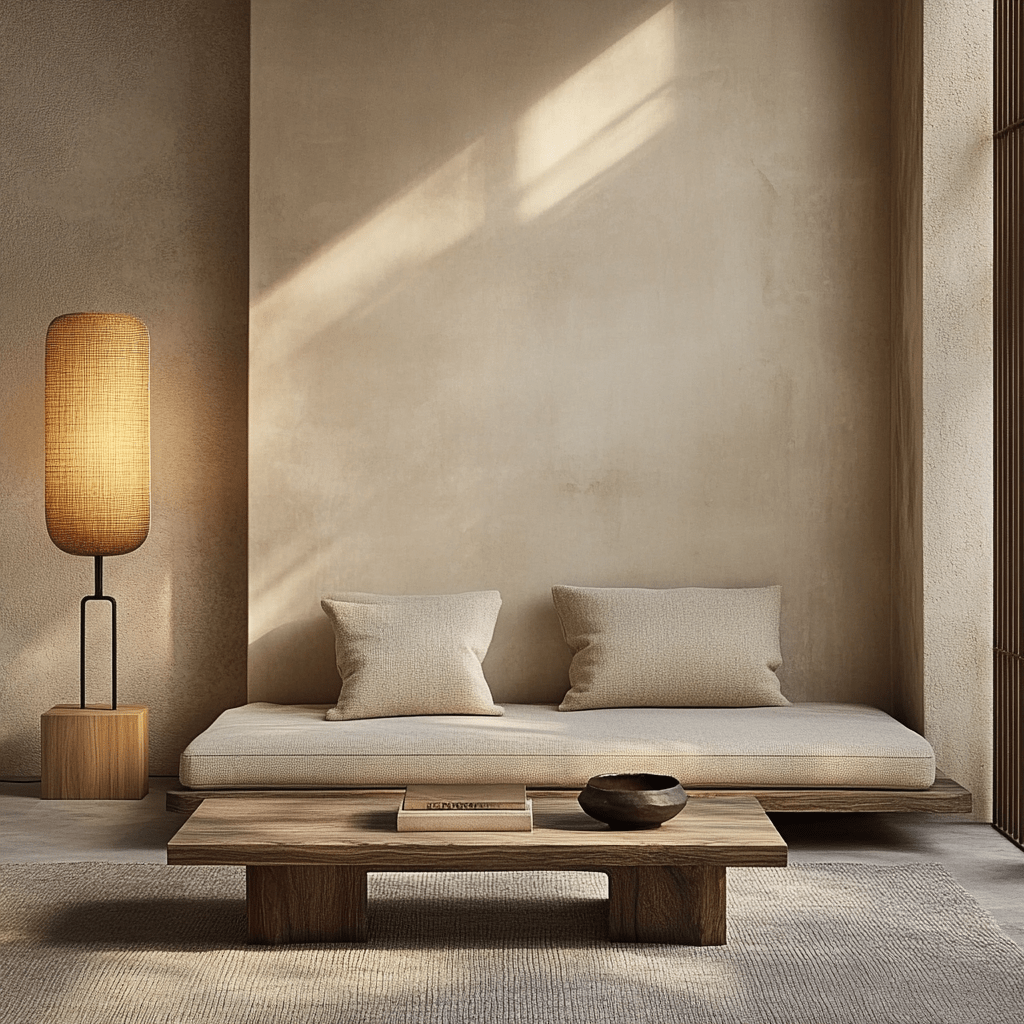
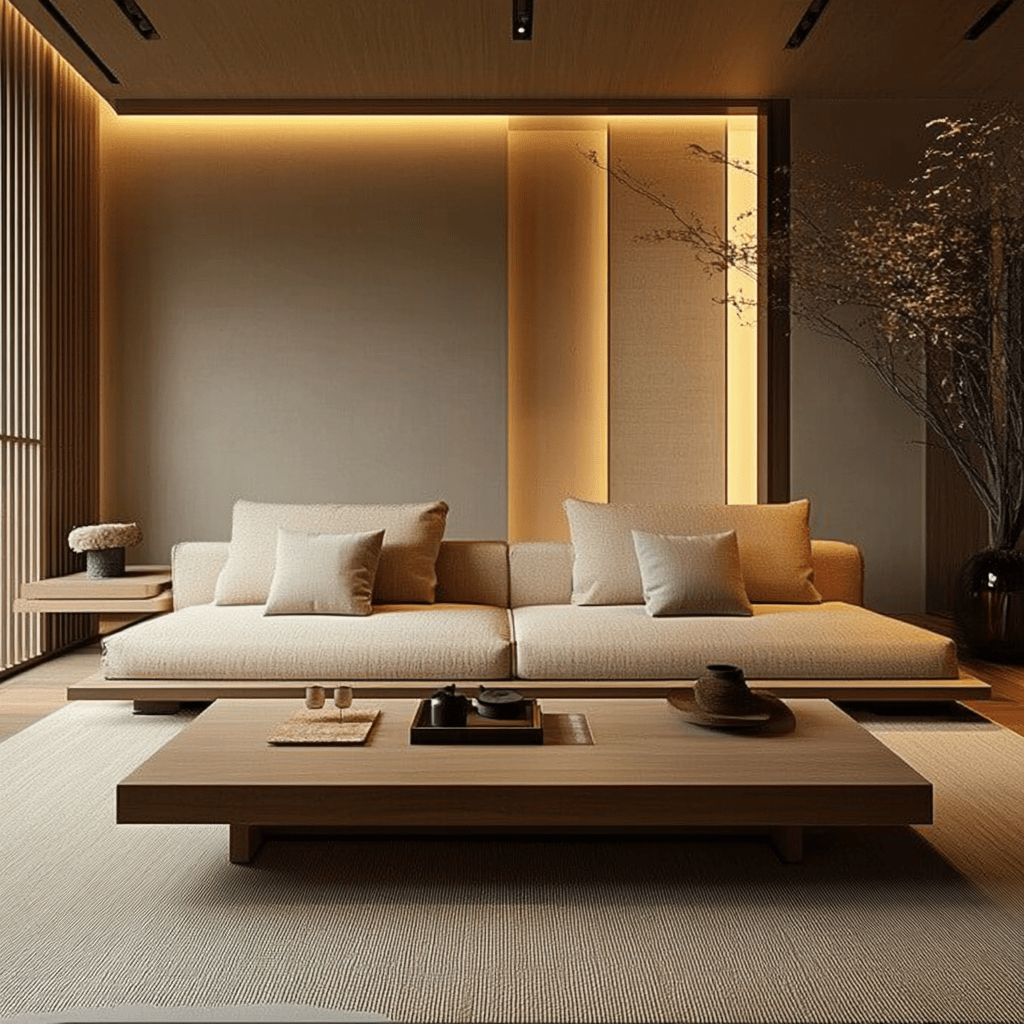
Bedroom
For the bedroom, think simplicity and tranquility. Choose a low-bed platform with midtone wood to harmonize with the aesthetics. Incorporate soft linen bed linens in neutral tones that elicit calmness. Don’t forget a decluttered space encourages sereneness and relaxation, so consider a versatile wardrobe with ample storage to maintain a minimalistic ambience.


Kitchen and Dining Room
In your kitchen and dining area, embrace a minimalist approach; clean straight lines, in-built storage cabinets with natural wood finishes work wonders. When it comes to dining furniture, seek simplicity. A natural finished wood table paired with streamlined dining chairs meets the aesthetic perfectly. Add a touch of warmth with dimmable, ambient lighting to enhance your culinary experiences.


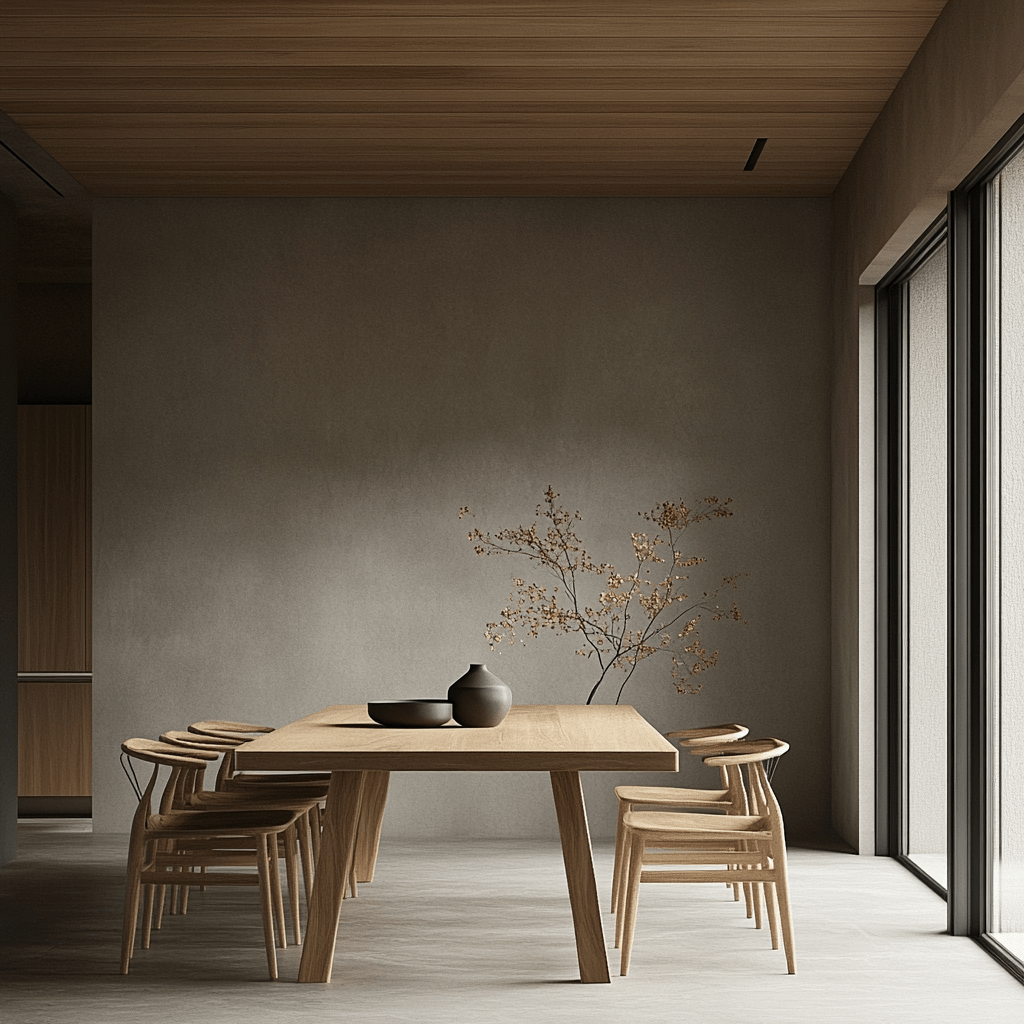

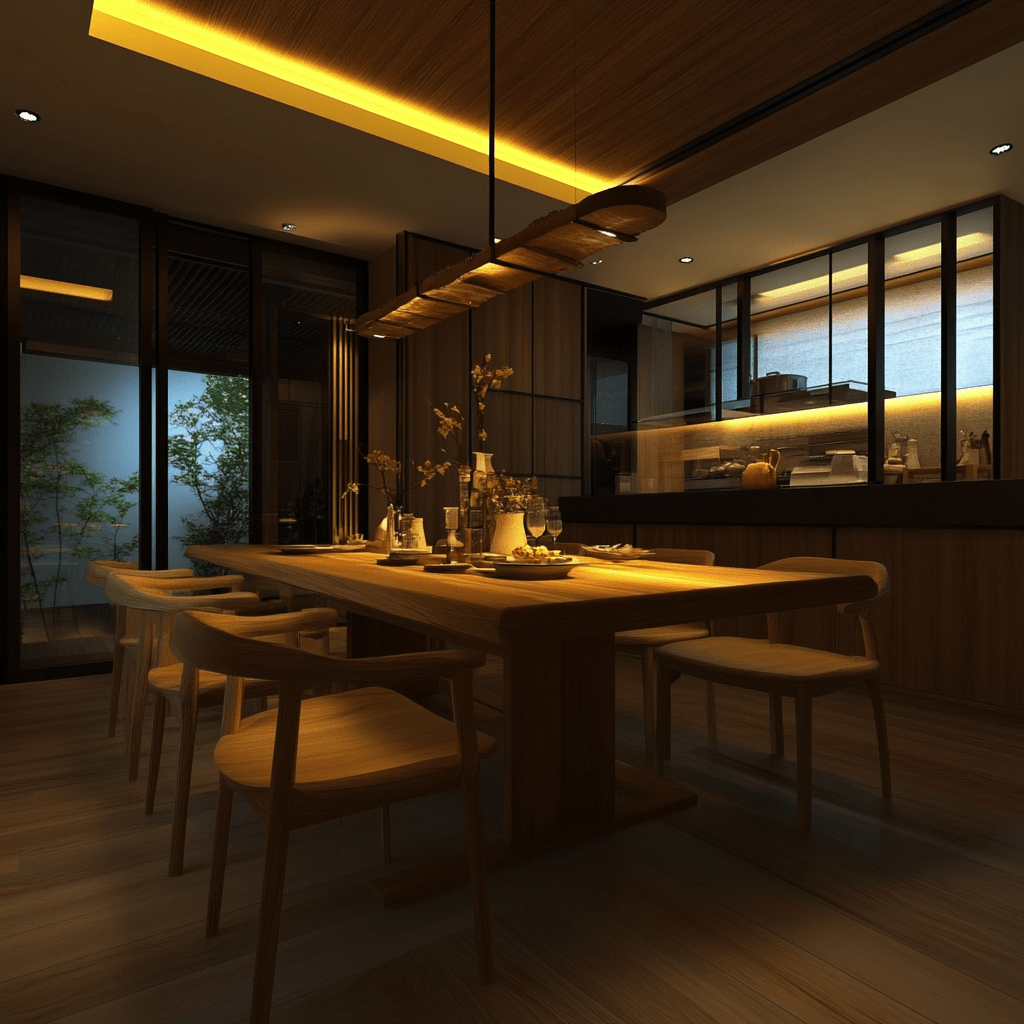

Bathroom
When designing your bathroom in Japandi style, you want to strike a balance between functionality and aesthetics. Begin with the basics. Opt for minimalist design elements that seamlessly blend form and function, like a sleek floating sink or a wall-mounted toilet. These not only elevate the look of your bathroom but also make the most out of your space. The color palette should lean towards neutral, soothing shades – think serene whites, soft grays, and rich earth tones. You can incorporate these through wall colors, tiles, linens, and even bathroom accessories like soap dispensers or toothbrush holders.

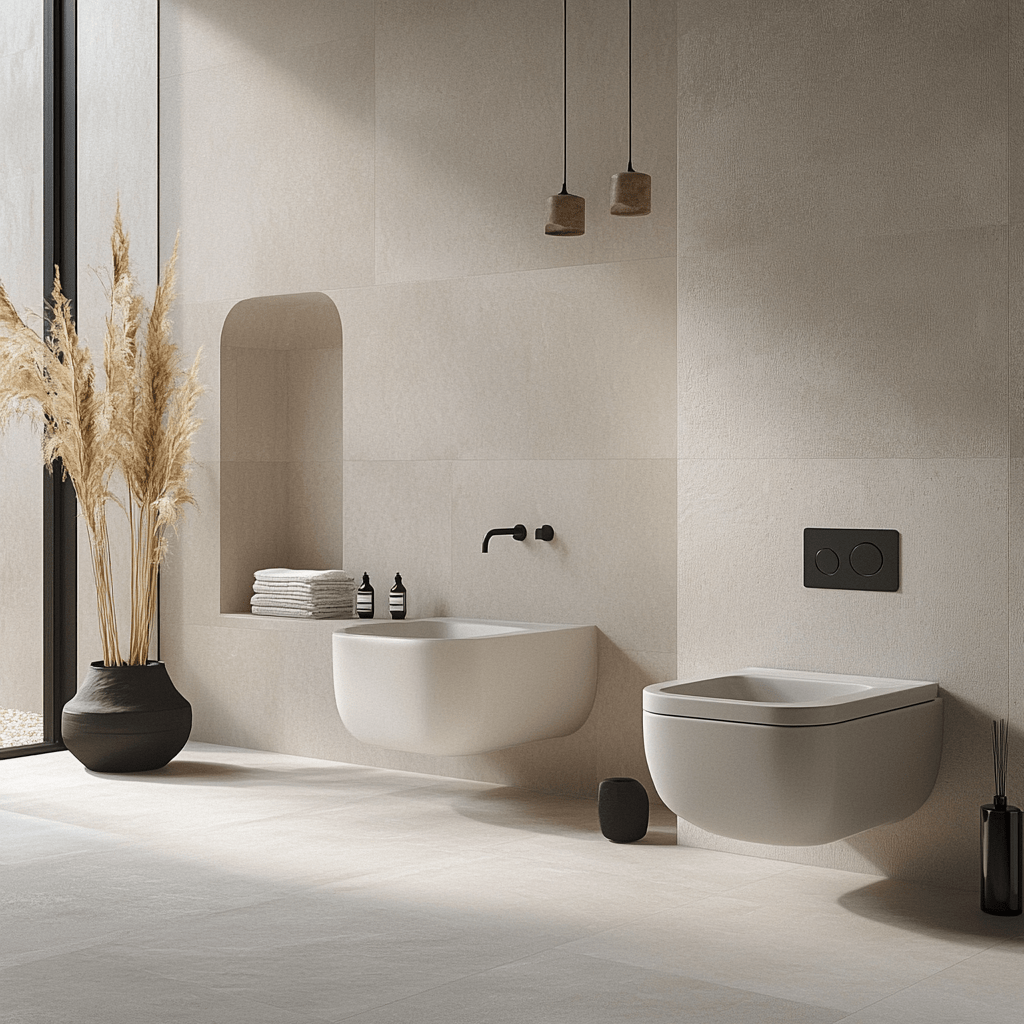

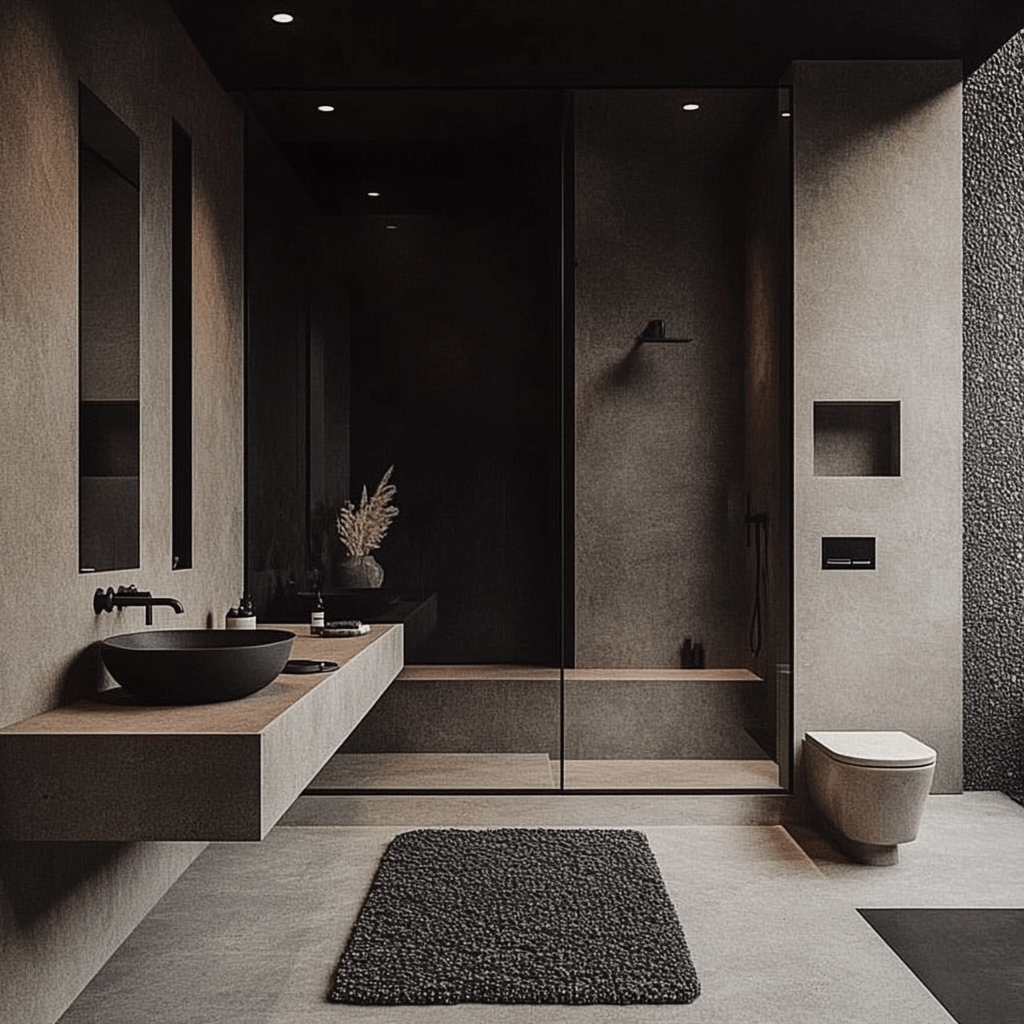
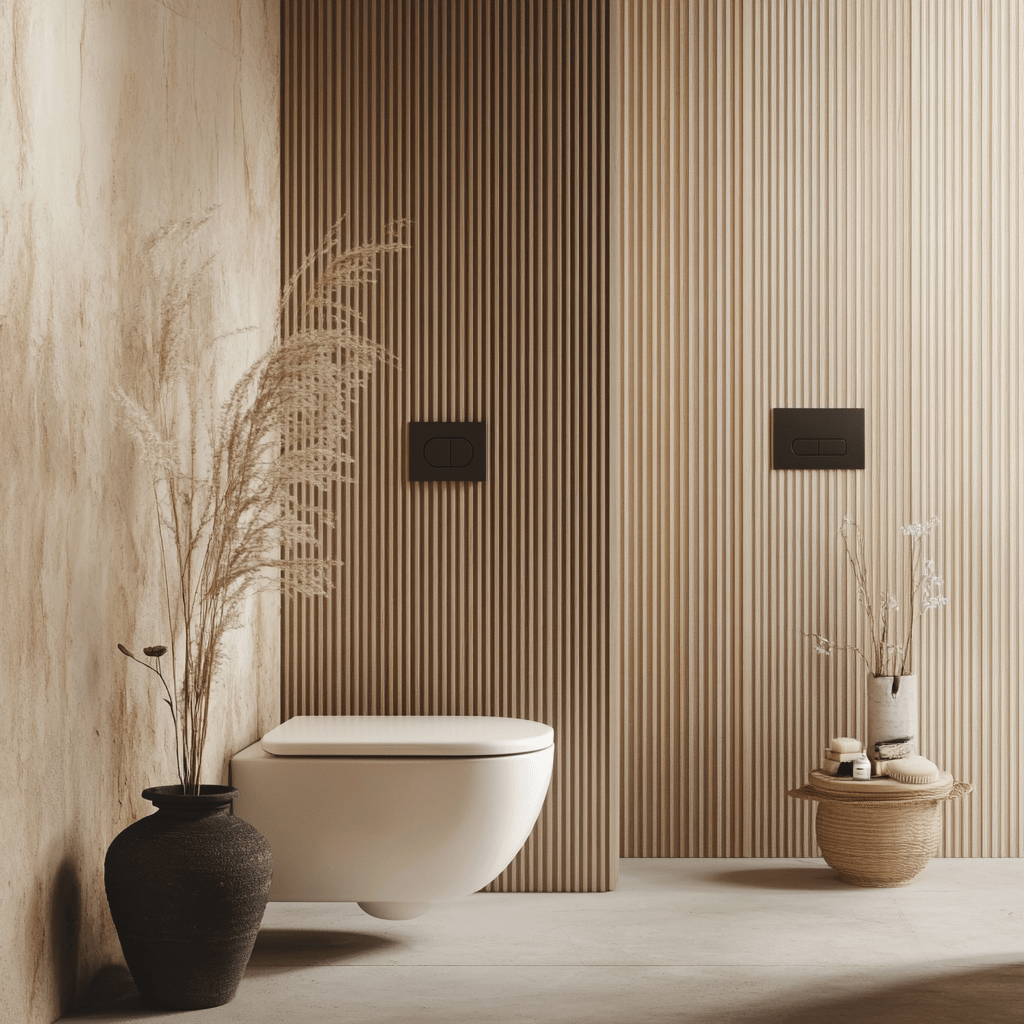
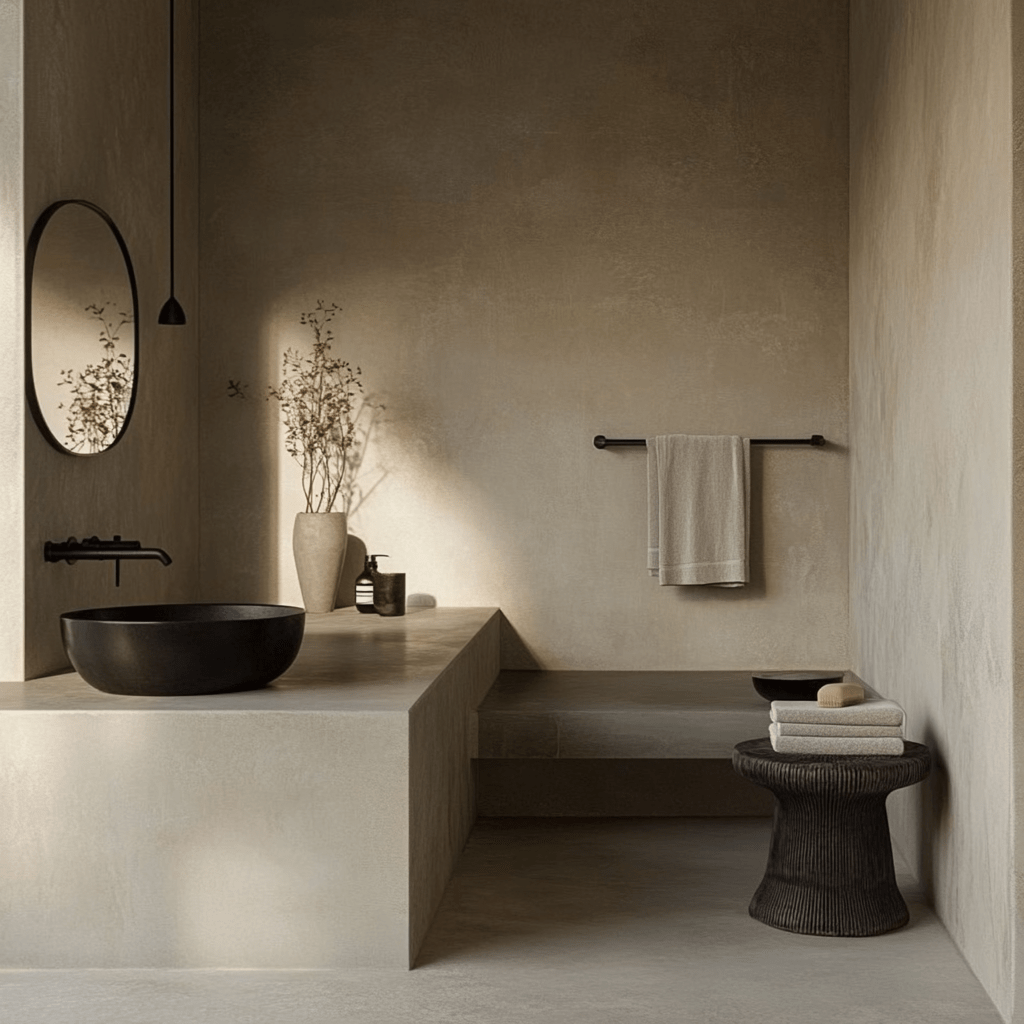
Choosing the Right Materials for Japandi Furniture
In selecting the ideal materials for your Japandi furniture, the focus lies on natural textures and sustainable resources. In other words, materials that emanate a sense of warmth and authenticity, walking hand in hand with environmental principles.
The most common materials ingrained within the Japandi aesthetic encompass items like rattan, wicker, and bamboo. These materials are cherished for their distinctive textures and their ability to infuse a natural feel into your space. Besides, they are highly sustainable, aligning perfectly with the eco-conscious Japandi philosophy.
Wood plays an integral role too, with varieties like walnut and teak leading the charge. Highly versatile and timeless, these woods imbue a sense of sophistication while allowing for various design options. Whether you’re considering a grand dining table or a subtly elegant side table, wood’s versatility makes it easy to incorporate in many forms.
Textile choices in Japandi design take a nod from both Scandinavian comforts and Japanese simplicity. Think cotton blends, linen, and even velvet in muted colors, all working harmoniously to add a touch of softness and tranquility to your space.
Other enriching materials often used in Japandi interior design include terra cotta, clay, glass, and concrete. Each brings a unique texture and adds an underlying rawness, a cornerstone of the Japandi aesthetic. Don’t forget about the inclusion of houseplants too. They add a refreshing dose of life and are key to bringing the ‘natural world’ indoors, another critical Japandi principle.
Investment in quality is paramount in Japandi design. Items chosen should be durable and expected to stand the test of time. This is quite insightful since it not only supports sustainability but also emphasizes the pursuit of functionality and the avoidance of unnecessary clutter.
In conclusion, material choice in Japandi design isn’t just about aesthetic appeal. It is a thoughtful selection process that reflects a commitment to sustainability, durability, and the seamless blend of comfort with minimalism. Opt for materials that resonate with these principles, and you’ll be well on your way to crafting a space that exudes the captivating Japandi aesthetic.
Practical Tips for Shopping Japandi Furniture
Embarking on the journey to buy Japandi furniture could be both exciting and daunting. Here are some practical tips to guide you on your shopping trip.
First and foremost, remember that quality is key to the Japandi aesthetic. Instead of buying many low-quality pieces, consider investing in fewer but high-quality, sustainable pieces that do more than just adorn your space. They should reflect the principle of longevity and eco-friendliness inherent in Japandi style.
-
ALCHEMIST – 3 seater japandi style fabric sofa in natural colors
Buy on Archiproducts3.582,41 € -
DRESS CODE FASHION – Fabric armchair with armrests
Buy on Archiproducts -
DRIADE – TOTTORI IVORY – Fabric armchair with armrests
Buy on Archiproducts -
Eames Molded Plywood Dining Chair Wood Base
Buy on 2modern.com -
GATE – Open modular wooden bookcase
Buy on Archiproducts -
HOOT – Rectangular wool rug
Buy on Archiproducts -
KRISTINA DAM – JAPANESE TRAY TABLE
Buy on Archiproducts -
Luna – Japandi style pendant lamp
Buy on Archiproducts -
Nelson Saucer Bubble Pendant Light
Buy on 2modern.com
Consistent with this aesthetic, focus on purchasing items with clean lines, natural materials, and muted color palettes. Building a collection around these principles ensures that every piece of furniture seamlessly enhances the Japandi style you aim to create.
The simplicity of the Japandi style may lead you to think that it lacks texture. Although the Japandi design focuses on stripping away unnecessary elements, it embraces the beauty of raw materials. Seek out materials like bamboo, walnut, teak, rattan, and wicker.
Keep an eye out for furniture pieces that epitomize comfort, yet exude a simple elegance. Look for soft textures like linen and cotton to complement the rigid structures of wooden furniture. Remain mindful of the color palette—whites, off-whites, beiges, and taupes are the primary colors you should consider, as they can create a calming atmosphere and evoke the warmth associated with Japandi interiors.
Furniture shopping is not just about buying ready-made pieces. Consider customizing your furniture if it adds functional value to your home and maintains the minimalist aesthetic. Whether it’s a shelf that doubles as a partition, or a couch that functions as a storage unit, embracing multipurpose furniture could be key to achieving the perfect Japandi system.
Finally, remember that achieving the Japandi aesthetic goes beyond merely purchasing furniture. It’s about creating an ambiance of tranquillity and serene cosiness. Use your discernment to avoid crowding, and ensure there’s enough room to let your furniture and space breathe. Harness the power of decluttering and open spaces to bring out the best of your Japandi home.
FAQ
What is the Japandi aesthetic?
The Japandi aesthetic is a hybrid of both Japanese and Scandinavian interior design principles, forming a distinct style that taps into the best of both worlds.
This design approach aims to maintain balance and harmony in the space while emphasizing the beauty of simplicity and functionality.
It creates an inviting, lived-in feel, achieved by incorporating natural elements and textures like wood, stone, and organic fabrics.
One of the significant aspects of the Japandi design is its sustainable philosophy. It encourages using long-lasting, eco-friendly materials to reduce environmental impact.
Furniture in the Japandi style tends to have a low profile with an emphasis on craftsmanship, where decorative elements are kept minimal to keep the focus on the form and functionality.
The Japandi color palette is typically comprised of muted tones and mid-range colors, drawing inspiration from natural landscapes to create a peaceful ambiance
What colors are typically used in Japandi style?
The color palette in Japandi interiors is known for its soothing and comforting tones. This minimalist aesthetic is dependent on a color scheme that embraces the tranquility, simplicity, and natural vibe of both Japanese and Scandinavian design. Here are some specifics:
Neutral Tones: Japandi style heavily uses neutral colors. Whites, off-whites, taupes, and beiges lend brightness and give the illusion of open, light-filled spaces. These color choices purposely encourage a sense of calmness and tranquility.
Muted Earthy Shades: To complement the neutrality, Japandi includes muted earthy colors. Warm color hues, like brown and green, are perfect representations of the ‘earthy’ component of Japandi aesthetic.
Mixed Warm and Cool Tones: To strike the right balance, Japandi design indulges a mix of warm and cool tones. The warmth of natural wood colors contrasts beautifully with cool greys or blues, providing a captivating depth to the overall aesthetic.
Accents Colors: Pops of color in subtle shades – think muted rust or mustard – may be introduced through accessories to give an engaging contrast against the otherwise neutral color scheme.

